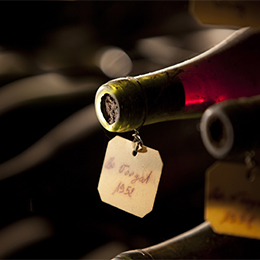
1959 was hot and dry. Flowering took place in optimal conditions and a few rain showers in early September were very beneficial for the vines, allowing the grapes – which were in extremely good health – to be harvested when they reached perfect ripeness.
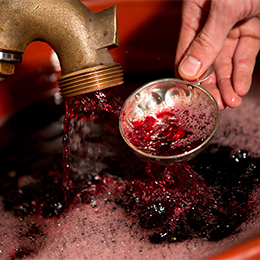
The end of winter was particularly cold, with snow in mid-March. The weather then turned warmer, and the growth cycle began in excellent conditions. Despite the weather growing colder at the end of June, the summer was hot, helping the grapes to ripen.
The wines were full-bodied with wonderful balance.
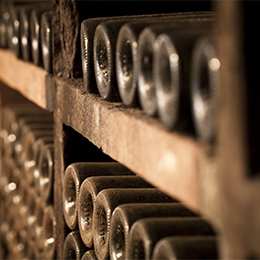
The spring was ideal for a good start to the growth cycle, followed by rapid flowering. But the summer was disappointing with a lack of sunshine in August. Fortunately, as the saying goes, “September makes the wine”, and the hot and dry weather that month ensured perfect ripening.
Wines of exceptional quality.
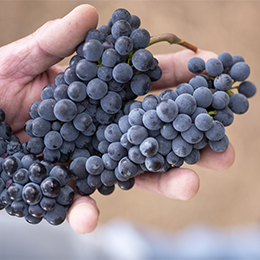
Spring arrived in April, but the weather deteriorated in May, delaying flowering. June and July were lovely but September was cold and wet. Winegrowers had to wait until early October to harvest.
High-quality tannins and good acidity ensured characterful wines with good keeping potential.
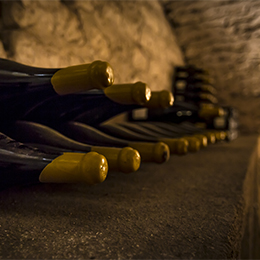
A beautiful spring meant budburst was early and vegetation growth rapid. However, the weather deteriorated in early June and flowering was affected, with shatter, a relatively key factor, having an impact on volumes. The summer was hot, with some violent hailstorms that caused significant damage in some places. September was very sunny but cool, which allowed the grapes to reach exceptional maturity. Picking began around 10 September, with excellent weather conditions.
The wines are magnificent.
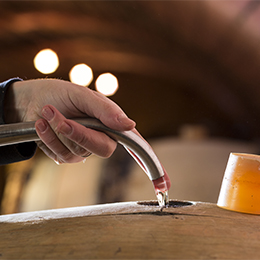
The winter was cold and damp. It snowed several times in January and even more in February. Spring arrived in March with temperatures rising above 20°C, which encouraged the growth cycle. However, the heat didn’t last long and the weather soon worsened. The end of spring saw cold and rain. Flowering was capricious with shatter and millerandage the norm. Summer didn’t really begin until mid-August. September and October were very dry, and the grapes, which were in perfect health, took their time to ripen. The harvest began on 7 October in very sunny weather.
Very harmonious wines with remarkable roundness and wonderful smoothness.
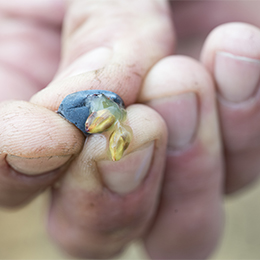
The winter of 1985 was one of the coldest ever experienced in Bourgogne. On 9 January, the temperature fell to -20°C. The big freeze lasted well into February and resulted in the loss of some 500 hectares of vines. It wasn’t until April that the temperatures shot up, climbing to above 25°C. Despite this, hard frost also hit the region at the end of April. The delayed growth cycle helped limit the damage and flowering took place from mid-June onwards. Aside from the heatwave at the end of July, the summer was fairly cool. September and October were hot and dry with record temperatures in early October. The grapes, which were in fabulous health, were harvested in October, ensuring perfect ripeness.
The wines from this vintage offer rare elegance and exemplary subtlety.
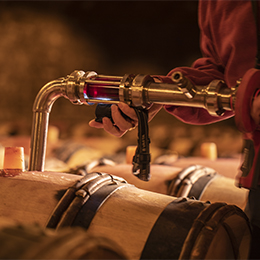
This was a very early year during which the head-start enjoyed by the growth cycle, which started with budburst in mid-April, continued right through to the harvest, which began on 13 September. Flowering occurred in early June and was rapid and regular. Hot and sunny weather in September ensured grapes of exceptional quality that were in perfect health and offering wonderful maturity.
These are rich and dense wines with spectacular intensity and aromatic quality.
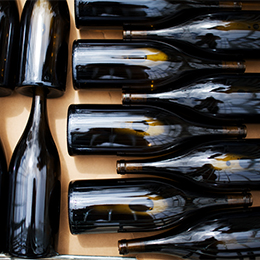
The winter was one of the mildest ever recorded, but there were big storms on 25 January and 3 February. The third week in February was marked by summery weather with the mercury hitting 25°C. At the end of February, there were two more storms, and March was hotter than usual, which encouraged the growth cycle to take off. However, cooler temperatures in June made things tricky for flowering. The summer was very sunny and a little rain in September provided the conditions for excellent ripening of wonderfully healthy grapes.
These wines offer rare breadth. Their texture is imposing and they have astonishing length on the palate.
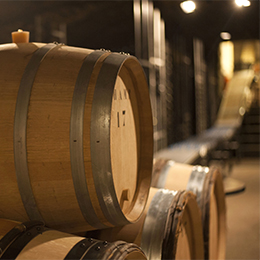
Although winter began with very mild temperatures and a few spells of snow, it finished with very cold, very unsettled weather. The first fortnight in February saw some very harsh frosts. From March onwards, the weather grew milder, but warm days were interspersed with cooler ones. In early April, a few frosts caused some serious damage but only locally. Flowering was quite late and began in mid-June. Two heatwaves marked the summer of 1999, which was very sunny and dry. Fortunately, a few thunderstorms in late August brought the rain necessary for good ripening. Excellent weather in September resulted in a vintage that was low in volume but very high in quality.
These are rich and complex wines with remarkable density and irreproachable structure in the mouth.
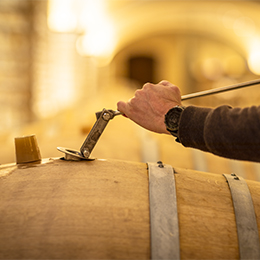
Winter brought cold and snowy periods, alternating with rainy and more temperate periods. A wave of cold and snow hit the region in early March, but the springtime temperatures in the second half of the month encouraged the life to return to the vines. Chilly weather returned during the first half of April, which upset the growth cycle somewhat, and it wasn’t until the third week that the weather changed radically and the vegetation exploded. The summery weather at the end of May encouraged flowering to begin. But the cold came back, settling in until the end of June. Shatter and millerandage occurred in many sectors. But despite a few local slowdowns in the ripening process, the hot and dry summer ensured optimum conditions for a truly exceptional vintage.
These wines have wonderful finesse and impressive aromatic quality.